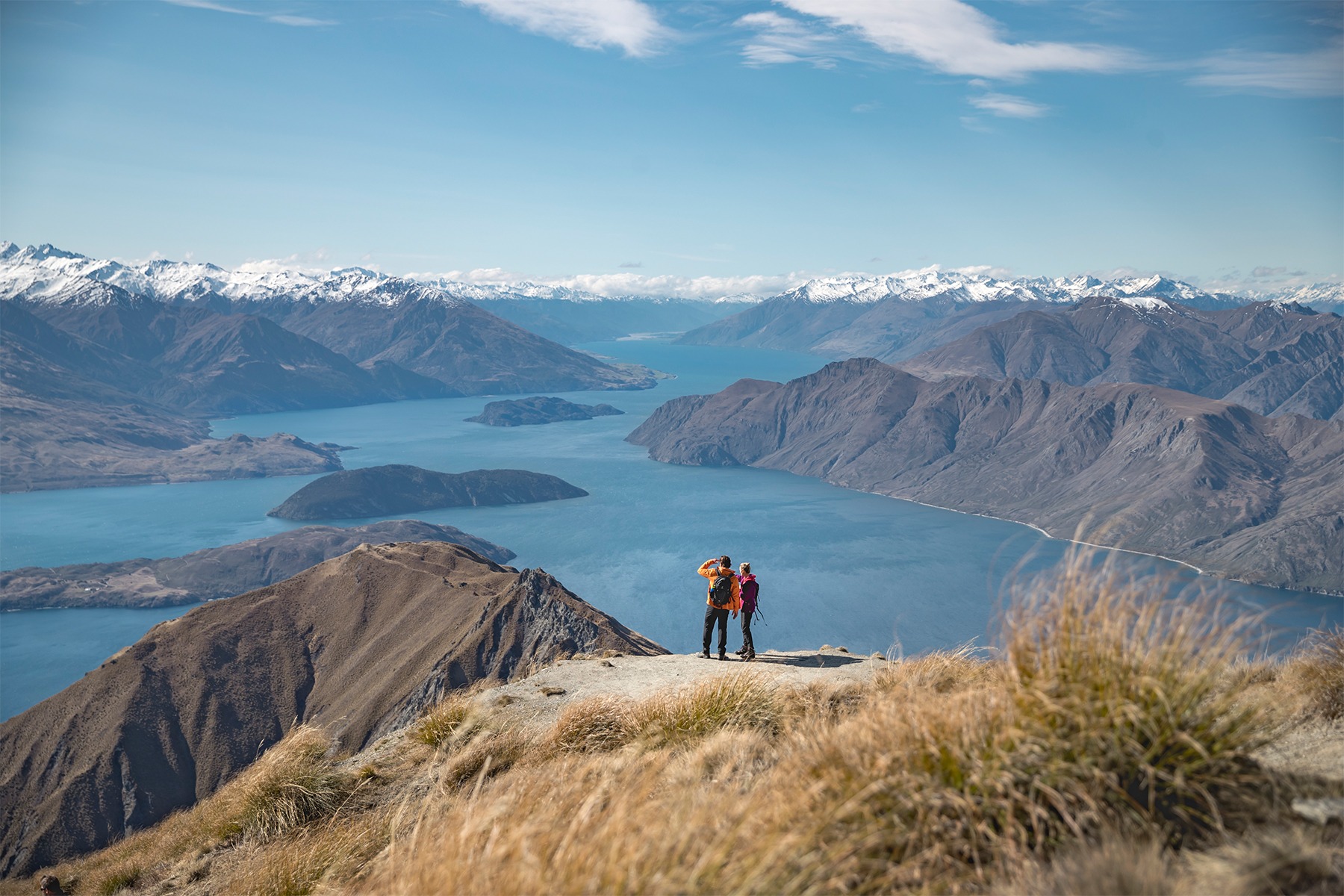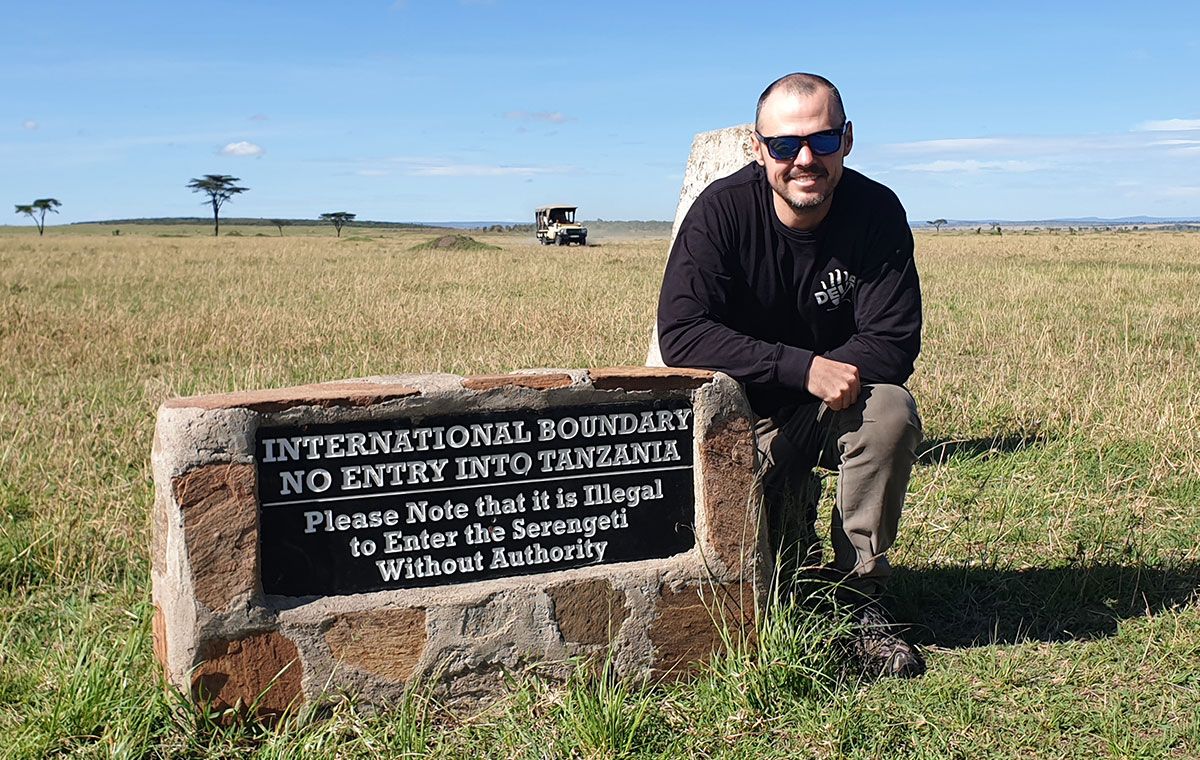
By Matt McMillan
Travelling to Tanzania‘s incredible Serengeti National Park along with Kenya‘s adjoining Masai Mara National Park is an experience any avid traveller should enjoy at some stage in their life. Most visitors travel to the region in high season, June to mid September because it’s the dry season and everyone wants to enjoy the ‘great migration’, or more specifically when mighty herds of wildebeest and zebra migrate north in search of water and cross over the Mara river.
As you can see with our handy map of the annual migration, the herds don’t simply disappear in the off season and follow a course around the two national parks in search of the greenest pastures. The map should be considered as a guide only as the migration is an unpredictable event and each year with climate change it seems to become more and more unpredictable.

The reason for the concentration of visitors from June to mid September is that this is typically the time when the herds make their dramatic crossing of the Mara River. This is undoubtedly an incredible event as you witness the intensity and nervousness of the huge herds as they risk their lives on the tricky river crossing, not only from the possibility of drowning but also from the chance of becoming lunch for one of the huge crocodiles or waiting lions, or from being torn apart by aggressive territorial hippo who reside in the river.

I’ve just returned from a trip to Tanzania encompassing the beaches of Zanzibar (see my guide here), Tarangire NP and a week of safari, five days of which were spent in central and northern Serengeti in the ‘off season’. Whilst I didn’t experience the herds crossing the Mara River, I was lucky enough to see the migration along with some of the most incredible wildlife sightings you could expect to see on any safari. Here are a few reasons to consider ‘off season’ travel;
- You can still see the Great Migration at other times of the year
- Weather can be warmer and offer other advantages
- Avoiding the crowds
- Sustainable travel and better guides
- Better value for money
As I mentioned earlier, you can still see the migration in other areas of the Serengeti at different times of the year. I cannot stress enough that seeing the migration on your safari is something which cannot be guaranteed but we can certainly customise a trip that will have you in a camp offering the best opportunities to see the migration. I was lucky enough to enjoy this encounter and was completely gob-smacked to watch the huge herds grazing the open plains.
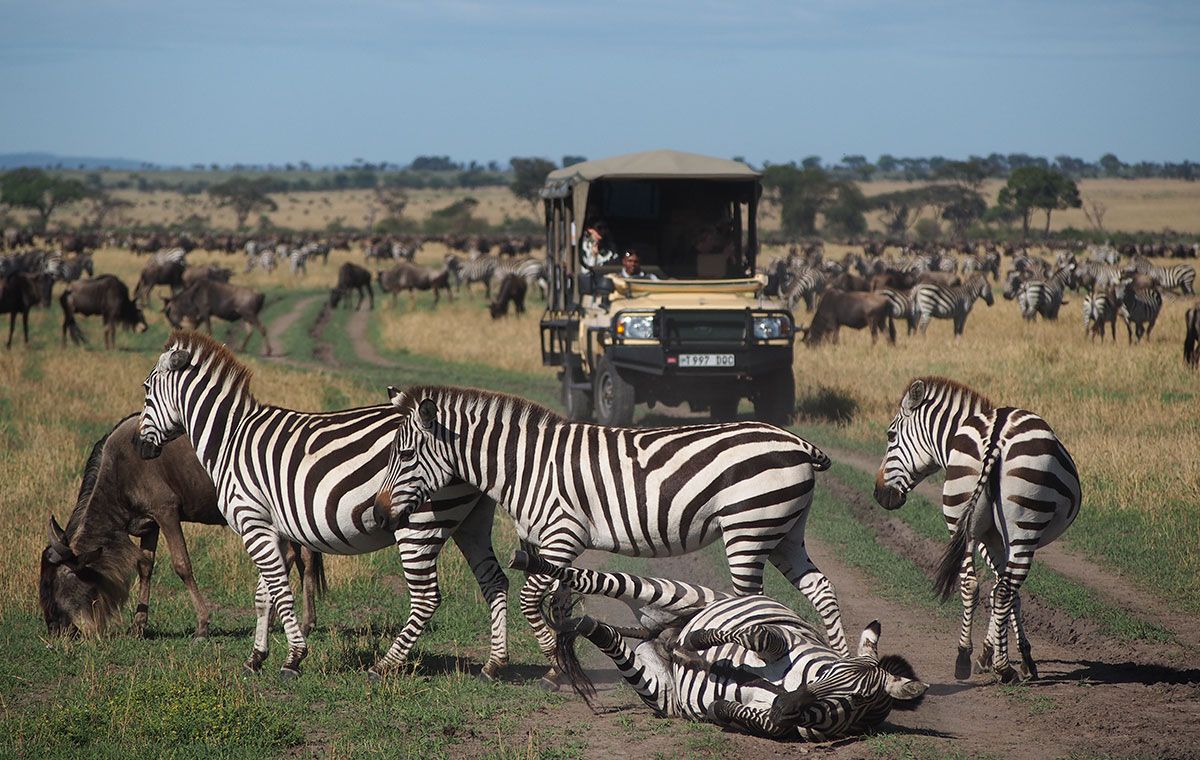
I wasn’t lucky enough to see a river crossing, however these are becoming more unpredictable each year and lodges and camps in the northern Serengeti are reporting a longer season each year. Last year there were river crossings up until beginning of December and this year the season started earlier than usual. January and February is also a popular time to see the migration in the Southern parts of the Serengeti. This is the usual ‘calving season’, when wildebeest and zebra migrate south to find grasses suitable for giving birth and is an extremely active time for predators, especially lions and leopard who are looking for an easy meal.
Peak season travel is also East Africa’s winter season and as such you can expect cooler weather, particularly in the evenings and early mornings when you would typically begin your game drive. The Ngorongoro Crater National Park (which is normally combined with a safari in the Serengeti and has higher altitudes) can be freezing at this time so you do need to be prepared. Off season travel can have much more comfortable temperatures, better for those like myself who enjoy the warm weather.
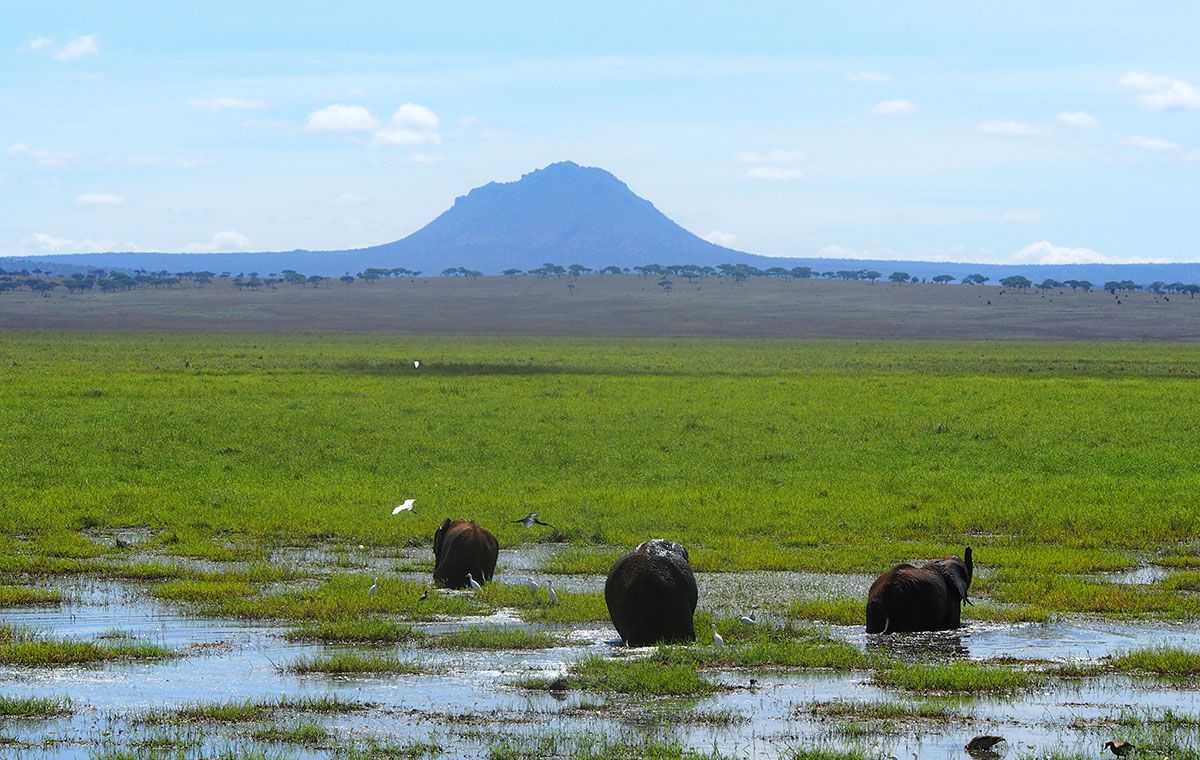
The wet season in Tanzania can leave the landscapes of the Serengeti and Masai Mara looking lush and is a more attractive time for bird watchers as migratory birds pass through the area. March to May generally have the heaviest rainfall, but rain isn’t a guarantee at any time and I wouldn’t expect your safari to be ruined by the typically short bursts of rain as your game drives can easily be adapted around the weather.
Up to 80 percent of tourists visit the Serengeti and Masai Mara during peak season, and as a result the area is flooded with safari vehicles. There’s no hiding from this and you can expect an animal sighting to be accompanied by several other vehicles, often full of noisy tourists. So travelling in the ‘off season’ can offer a more relaxed, intimate experience and hopefully result in better wildlife sightings.
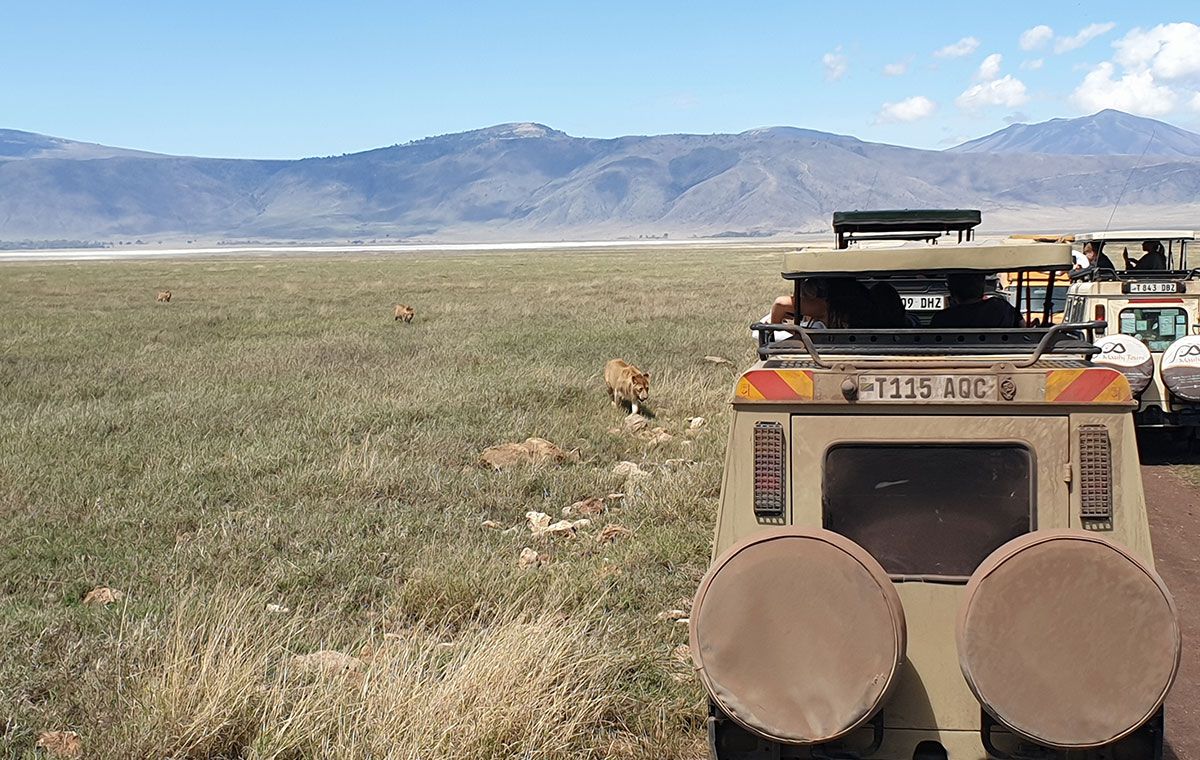
A smaller region like Ngorongoro Crater National Park can be especially crowded at this time with often over 30 or 40 vehicles at a single sighting, so visiting in low season can give you better opportunities to see wildlife, hopefully even some of the resident Rhino of this incredible park. This area can be crowded even in the ‘off season’ so staying at a lodge with closer access to the crater floor like the Lemala Ngorongoro Camp which I recently visited can enable you to have a vastly improved safari experience.
Expanding on point three above, it’s important to consider the impact of crowding on the environments you are visiting, with greater erosion being caused and more pollution being a likely result. More traffic can also result in increased stress to wildlife and by concentrating the majority of tourism in certain months it can mean that operators are spread thin at this time. In the ‘off season’ you are more likely to get a better guide and a better quality vehicle that has been maintained more regularly.
Lastly and very importantly, going on a safari in low season means you can access some amazing deals, either making your safari significantly less expensive or using the lower prices to enable you to stay in a much higher standard of accommodation that may have been out of your budget in peak season. It’s also much easier to find availability at your first choice of lodge in the ‘off season’, and with a higher staff to client ratio you can hopefully be treated to more personalised service than you would be at a fully booked lodge.

The Serengeti and Masai Mara are filled with animals year round, and with the help of our African specialists we can ensure you are in the right location at any time, hopefully saving you some money or giving you a more comfortable safari experience.
For some further reading on travel in Africa here are a few other articles written by our team:
- Comprehensive Africa Guide
- Game Reserves vs National Parks
- Top 5 Reasons to Visit Tanzania
- What are the Different Ways to go on Safari?
- Kenya Safari: Samburu, Lake Nakuru & Maasai Mara
- Magical Botswana
- Exploring Zimbabwe: Safaris, Splendour and Surprises
- Unbelievable Uganda
- Unforgettable Tanzania Safari
- Zambia, Zimbabwe & Botswana Overview
- Eastern Cape and Kruger Safaris Review
You can see the African holidays we offer here.
If you want to find out more about the destinations in this article, or have any questions in general please contact us.




